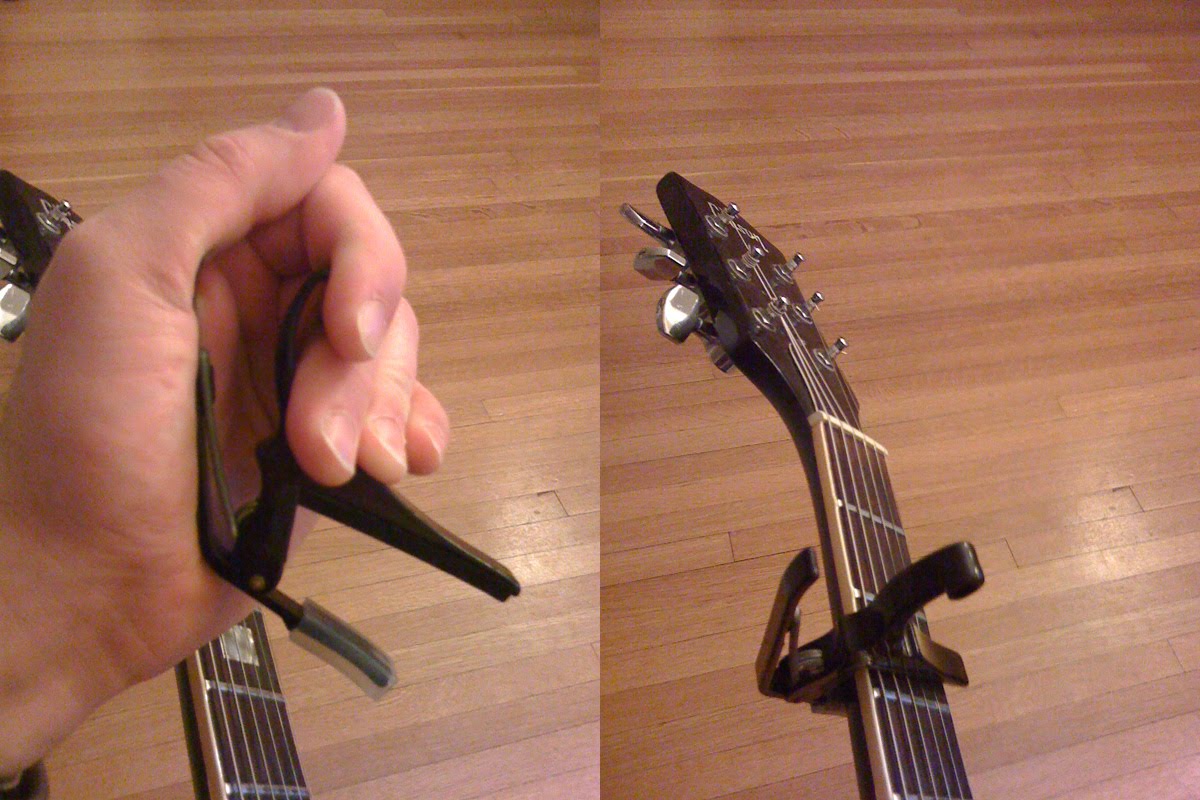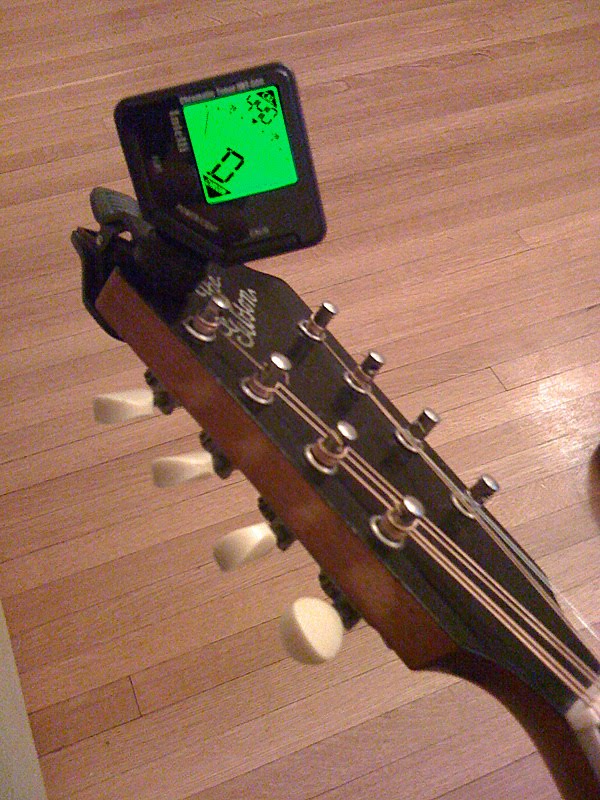The December meeting of the UX Group was a great event, despite the appalling weather. Much as with last month’s Ignite Waterloo event, the meeting showed that when people talk about a product design that they are passionate about, the results are always illuminating and engaging.
I thought I’d briefly share the products that I brought to the table.

First was a guitar capo. A capo is a device for holding down the strings on a fretted musical instrument, like a guitar, in order to raise the pitch. There are several styles and designs, ranging from a simple bar with an elastic strap, to more complex inventions. I’ve owned several, with designs optimized for cost (the aforementioned elastic strap) and preservation of tuning (though at the usability cost of requiring very precise placement) amongst them. The capo that I showed is made by Kyser, and is optimized for fast, one-handed operation. The easy to grab handle makes fast changes a breeze, and it can be easily clamped to the headstock when not in use. Mine works quite well and I’m happy with the results.

Next up was a compact tuner. Musicians have long lived with the need to tune their instruments. While being able to do so by ear is a great skill to have, not everyone has the ear to do so reliably when first learning to play, and even those that have developed their ear may need to tune in a noisy environment. Electronic tuners have been around for decades now, and they’ve been a great aid for getting an instrument in tune. My first electronic tuner, which I acquired years ago for tuning my guitar which I and still have, is a large device and has a great analogue needle that shows how far off a note is from being in tune. It’s clumsy to use with an acoustic instrument, though, but it is accurate. The newer tuner that I brought to the event, made by Intelli, is optimized for ease of use with fretted instruments. It clamps onto the head stock of the instrument and detects notes through vibrations transmitted via this direct contact. It swivels to make the display visible, the display is very bright and easy to see, it works with both acoustic and electric instruments, fits all my guitars and my mandolins, and it is small enough to easily fit in an instrument’s case. It’s not perfectly accurate, but it’s great for my needs.
It was fun to share these objects with the group, and I enjoyed the conversations.
